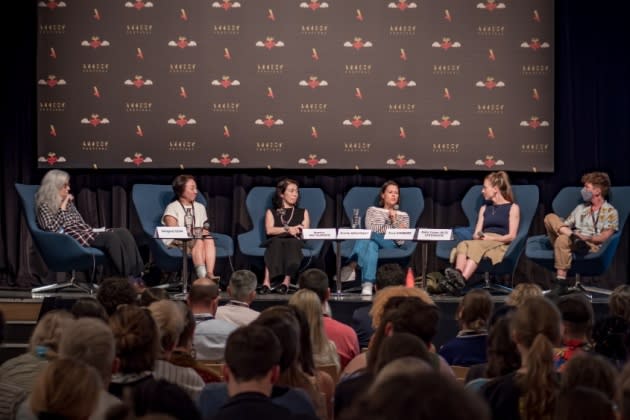Leadership and Diversity Must Go Hand-in-Hand, Say Panelists At WIA Summit

The path to a more diverse industry would require personal tenacity, professional flexibility and certain key structural changes, panelists at a Women In Animation round-table argued.
Organized as part of a daylong WIA Summit held at the Annecy Animation Festival – and available free of charge on the Women in Animation website – the Monday afternoon panel focused on the diversity from the perspective of leadership, asking what practices and styles could help foster a more equitable field.
More from Variety
Director Marjolaine Perreten Talks Annecy Highlight Short 'Pebble Hill'
With 'Migration,' Illumination's Chris Meledandri Emphasizes Auteurism
First and foremost are the players themselves, which is why the panelists urged prospective talent not to be shy when reaching out to potential employers.
“Our biggest challenge is finding the artwork,” said producer Emilie Walmsley. “There’s so much talent [out there] but making that first link is the most difficult place.”
As the head of animation at the Paris-based Eddy TV, Walmsley said that remote work could certainly offer greater opportunities to animators of diverse backgrounds and nationalities, but in order to seize such opportunities, said animators would need a greater online presence. The producers told to applicants to use social media as online portfolio and to cast timidity aside.
“Don’t be afraid to send emails, messages, links to Instagram, because all of our producers are looking for people,” she said. “So the moment you contact us is never badly seen.”
Only for those already through the door and working on set, early-career compensation has a pernicious way of stifling diversity around certain class strata as well.
“There’s still a glass ceiling, and the queue of people behind me is huge,” said director Anna Ginsburg. “I couldn’t be a director if my mom hadn’t let me live with her for free [when I was just getting started] because I wasn’t paid properly as a model maker and assistant.”
“There was a lot of exploitation and unpaid internships, which are the dastardly cogs of the industry,” she said of her early days. “And I think creating a studio where that just is not allowed – so that people feel respected and valued — is incredibly important.”
Ginsburg also said that her mentorship and educational work at a BFI youth program helped hone her leadership capacities on commercial productions as well, echoing a common refrain that leading diverse teams means culling from diverse life experiences.
“If anyone has the opportunity to teach 40 teenagers [all while they’re] falling in love with each other — do it,” Ginsburg laughed.
As an independent cartoonist turned staff-writer turned showrunner, ND Stevenson said that his career path afforded him invaluable perspective once he took to leadership roles.
“When it comes to artist management, having people who understand, have done the jobs themselves, know what it entails and know how to communicate about it [is key],” said the “Nimona” creator and “She-Ra and the Princesses of Power” showrunner.
Stevenson also argued that a certain kind of diversity of expression was essential when managing and fostering promising talent.
“Recruiting people and forming a diverse team is a great place to start,” Stevenson explained. “But if they’re not feeling supported and heard, and if they’re not getting everything they need in order to thrive in that environment, they’ll end up burning out.”
“Listening is a big part of sustaining these careers,” he continued. “Part of that is [avoiding] forced positivity. That’s just not how people are, and I think there’s something to be said for keeping an open forum for all thoughts and feelings – even if sometimes they’re negative – and making sure there’s an outlet for those as well.”
Best of Variety
Sign up for Variety’s Newsletter. For the latest news, follow us on Facebook, Twitter, and Instagram.
